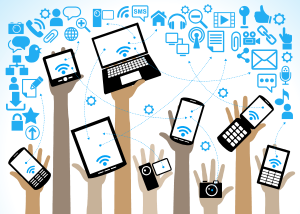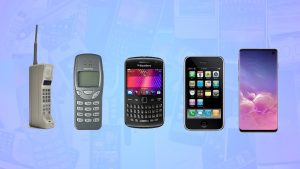
As we step into 2024, the landscape of mobile technology is evolving at an unprecedented pace. Innovations in this sector are not only enhancing user experiences but are also redefining how we connect with the world. This article explores the top innovations in mobile technology, focusing on advancements in network service providers, network connectivity, cellular phone networks, and the use of mobile technology. We will discuss the benefits of these innovations and provide case studies illustrating their impact on consumers and businesses alike.
1. Advancements in Network Service Providers

Network service providers play a crucial role in the mobile technology ecosystem. In 2024, we are witnessing significant advancements in how these providers deliver services to consumers. With the rollout of 5G networks in various regions, network providers are enhancing the speed and reliability of mobile services.
Benefits of Enhanced Network Services
- Increased Speed: 5G technology promises download speeds up to 100 times faster than 4G, enabling smoother streaming, faster downloads, and improved gaming experiences.
- Low Latency: The reduced latency of 5G networks enhances real-time communications, crucial for applications like online gaming and virtual reality.
- Greater Capacity: With the growing number of devices connected to mobile networks, 5G can support more users without compromising service quality.
Case Study: Verizon’s 5G Network Rollout
Verizon has been at the forefront of 5G deployment in the United States. By investing heavily in infrastructure, they have been able to offer consumers lightning-fast internet speeds. For instance, a user in Chicago was able to download a full HD movie in less than a minute, showcasing the real-world benefits of enhanced network services.
2. Enhanced Network Connectivity
The demand for reliable network connectivity continues to grow, prompting innovations in network architecture and design. In 2024, we see a focus on improving network connectivity through advanced technologies like mesh networking and satellite internet.
Benefits of Improved Connectivity
- Wider Coverage: Innovations in network architecture allow for broader coverage, especially in rural and underserved areas.
- Resilience: Enhanced network designs increase resilience against outages and disruptions.
- Cost-Effective Solutions: New technologies often come with reduced operational costs for providers, which can lead to lower prices for consumers.
Example: Starlink Satellite Internet
Elon Musk’s SpaceX has launched Starlink, a satellite internet service designed to provide high-speed internet access across the globe, including remote areas. Users in rural communities have reported internet speeds comparable to urban settings, illustrating the potential of satellite technology in bridging the connectivity gap.
3. Evolution of Simple Phones

While smartphones dominate the mobile market, there is a growing trend toward simple phones equipped with essential features. These devices cater to users who prefer minimalism and are looking for cost-effective solutions.
Benefits of Simple Phones
- Affordability: Simple phones are typically more affordable than smartphones, making them accessible to a broader audience.
- Ease of Use: With fewer features, simple phones are easier to navigate, making them ideal for the elderly or those unfamiliar with technology.
- Extended Battery Life: These devices often boast longer battery life, as they consume less power than their more complex counterparts.
Case Study: Nokia’s Return to Simple Phones
Nokia has successfully reintroduced simple phones that appeal to consumers looking for reliable communication without the distractions of smartphones. The Nokia 3310, a modern take on the classic model, has seen a resurgence in popularity, particularly among older users and those seeking a secondary device.
4. New Technologies in Mobile Communication
The mobile technology landscape is continuously evolving, with new technologies emerging to enhance communication. Innovations like Artificial Intelligence (AI) and the Internet of Things (IoT) are becoming integral to mobile technology.
Benefits of New Technologies
- Personalized User Experiences: AI can analyze user behavior and preferences, providing tailored recommendations and services.
- Smart Device Integration: IoT enables seamless communication between mobile devices and other smart devices, enhancing the overall user experience.
- Improved Security: Advances in technology allow for better encryption and security measures, protecting user data and privacy.
Example: AI-Powered Virtual Assistants
Virtual assistants like Google Assistant and Apple’s Siri have become staples in mobile communication. They utilize AI to understand user queries and provide relevant information. For instance, users can set reminders, send messages, or get directions through simple voice commands, showcasing the convenience offered by these technologies.
5. Cellular Phone Networks and Their Impact

Cellular phone networks are the backbone of mobile communication, and innovations in this area significantly influence user experience. In 2024, we see advancements in cellular technology, including the deployment of 5G and future developments like 6G.
Benefits of Advanced Cellular Networks
- Faster Data Rates: Enhanced cellular networks facilitate faster data rates, allowing users to stream high-definition content without buffering.
- Enhanced Reliability: Advanced cellular networks offer greater reliability, ensuring users remain connected even in high-demand situations.
- Innovative Applications: Improved cellular technology enables the development of innovative applications that leverage high-speed connectivity.
Case Study: T-Mobile’s 5G Expansion
T-Mobile has been aggressively expanding its 5G network across the United States, focusing on both urban and rural areas. The company’s efforts have resulted in improved connectivity for millions of users, enabling access to high-speed internet and innovative applications, such as telemedicine and remote work solutions.
6. The Role of Cell Phone Providers
Cell phone providers are essential in bringing new mobile technologies to market. As competition increases, these providers are innovating to offer better services and plans.
Benefits of Competitive Cell Phone Markets
- Lower Prices: Increased competition among providers often leads to lower prices for consumers.
- Diverse Plans: Consumers benefit from a variety of plans catering to different needs, from unlimited data to prepaid options.
- Enhanced Customer Service: Competitive markets often drive providers to improve customer service and support.
Example: Mint Mobile’s Flexible Plans
Mint Mobile has disrupted the cell smartphone market with its flexible, low-cost plans. By allowing customers to purchase plans in bulk, Mint Mobile offers significant savings compared to traditional providers. This innovative approach has attracted a loyal customer base seeking affordability without sacrificing service quality.
7. The Global System for Mobile Communication (GSM)

The Global System for Mobile Communication (GSM) remains a critical standard in mobile technology. As we progress into 2024, GSM continues to evolve, incorporating new features and capabilities.
Benefits of GSM Innovations
- Standardization: GSM provides a standardized framework for mobile communication, ensuring compatibility across devices and networks.
- Enhanced Security: Innovations within GSM have led to improved security measures, protecting user data and communication.
- Global Reach: GSM technology allows for seamless communication across borders, benefiting international travelers and businesses.
Example: GSM in International Roaming
GSM’s global reach allows users to roam internationally with ease. For instance, a traveler using a GSM-enabled device can receive calls and texts without switching SIM cards or changing networks, enhancing convenience and connectivity.
8. Local Area Networks and Their Mobile Integration
Local Area Networks (LANs) play a significant role in mobile technology, particularly in how devices connect to the internet within a limited area. In 2024, the integration of mobile technology with LANs is becoming increasingly important.
Benefits of LAN Integration
- Improved Speed: LANs offer faster data transfer rates compared to traditional internet connections, enhancing user experiences in local environments.
- Cost Efficiency: Organizations can reduce costs by utilizing LANs for data transfer rather than relying solely on mobile networks.
- Increased Security: LANs can provide enhanced security measures, protecting sensitive data from external threats.
Case Study: Office Environments Utilizing LANs
Many organizations have adopted LANs to support mobile devices used by employees. For instance, a tech company implemented a robust LAN to support its remote workforce, enabling seamless communication and collaboration through mobile devices. This integration resulted in increased productivity and reduced operational costs.
Conclusion
As we look ahead to 2024, the innovations in mobile technology are set to transform how we connect and communicate. From advancements in network service providers and connectivity to the evolution of simple phones and the integration of new technologies, the landscape is rich with opportunities. The benefits of these innovations are profound, impacting consumers and businesses alike.
Through case studies, we have seen real-world examples of how these advancements are reshaping our mobile experience. As mobile technology continues to evolve, staying informed about these trends will be crucial for leveraging the full potential of this dynamic industry









